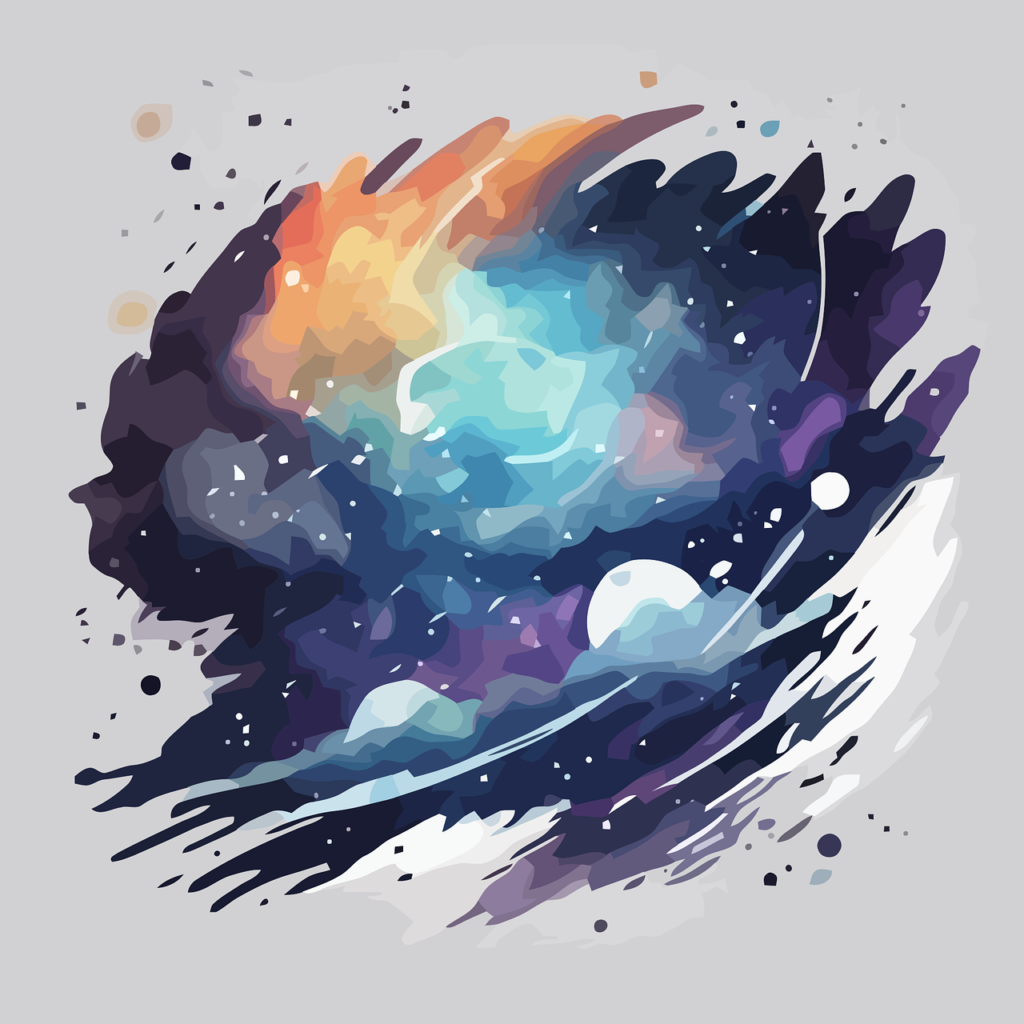Embroidery has always been a craft that allows crafters to bring their creativity to life through colorful threads and intricate designs. The galaxy:aotbpbf1nps= stitch, however, takes embroidery to an entirely new level by allowing you to recreate the vast beauty of galaxies, stars, and nebulae on fabric. In this article, we’ll dive deep into mastering the galaxy:aotbpbf1nps= stitch, exploring techniques, tips, and the materials you’ll need to create your own stunning celestial artwork.
Whether you’re new to embroidery or a seasoned expert, the galaxy:aotbpbf1nps= stitch can help you elevate your projects and produce truly eye-catching pieces. So, let’s explore this mesmerizing technique and unlock the beauty of the universe through thread!
Why Galaxy Embroidery Is So Popular
Galaxy embroidery has become incredibly popular for a reason—it taps into our fascination with space and the cosmos. By using dark fabric backgrounds and a combination of bright and metallic threads, you can bring the mysteries of the galaxy to life. The galaxy:aotbpbf1nps= stitch is a particularly attractive choice because it blends technical skill with a wide range of creative possibilities. Whether you’re stitching a small patch or a large art piece, galaxy designs offer an endless variety of patterns and textures that feel both artistic and contemporary.
Materials You’ll Need to Get Started
Before embarking on your embroidery journey, you’ll need to gather the right materials. The galaxy:aotbpbf1nps= stitch requires a few specific items to ensure your project comes out perfectly.
- Fabric: Opt for a dark fabric like black or deep navy to mimic the night sky. Cotton or linen are popular choices, as they have a tight weave that holds stitches well.
- Embroidery floss: Choose colors in shades of blues, purples, pinks, and whites to represent the galaxy. Metallic threads, such as silver and gold, are great for adding shimmer to your stars.
- Needles: Use high-quality embroidery needles in various sizes for different stitch types.
- Embroidery hoop: This tool will help keep your fabric taut and make your stitching more precise.
- Fabric markers: To sketch your design onto the fabric before you begin stitching.
- Scissors: Small, sharp scissors are necessary to trim excess threads and make clean cuts.
Choosing the Right Fabric and Threads
The first step in creating a successful galaxy:aotbpbf1nps= stitch is selecting the right materials. Your choice of fabric plays a crucial role in achieving a vibrant and realistic galaxy effect. Dark fabrics, such as black or deep navy, mimic the vastness of space and provide a perfect backdrop for the colorful threads. Opt for tightly woven cotton or linen, as these materials hold stitches well and ensure longevity.
When it comes to threads, variety is key. To create depth, use a combination of colors like deep blues, purples, and pinks for the galaxy’s swirling clouds of gas, along with whites and metallic threads for stars. Blending different colors will give your galaxy a more realistic, 3D effect.
Sketching Your Galaxy Design
Before diving into your stitches, sketching out your galaxy design is an essential step. Use fabric markers or chalk to outline where you want key elements like stars, nebulae, and swirls of color to appear. This helps you maintain proportion and symmetry as you stitch.
Reference images of real galaxies can provide inspiration for your design. The Andromeda Galaxy or the Milky Way offer stunning color patterns and shapes that are perfect for embroidery. Keep in mind that while detailed designs are exciting, sometimes simplicity allows the stars and nebulae to stand out even more.
Stitch Techniques for Stars, Nebulae, and Swirls
Now, let’s get into the technical aspects of the galaxy:aotbpbf1nps= stitch. Different stitch techniques will help you achieve the illusion of stars, swirling nebulae, and even glowing celestial bodies. Here are some key stitches you’ll want to master:
- French knots: Perfect for tiny stars, French knots add texture and dimension to your embroidery. Vary the size of the knots to mimic the appearance of stars scattered across the night sky.
- Satin stitch: This smooth stitch is excellent for filling in larger areas like nebulae. It creates a polished look and works well for blending colors.
- Long and short stitch: Ideal for shading and creating gradients, this stitch is perfect for the swirling patterns of galaxies. The variation in stitch length adds movement and fluidity to your design.
- Backstitch and split stitch: Use these stitches for creating the delicate lines of swirling gas clouds. These simple stitches allow for precision and help tie together the different elements of your galaxy.
Layering Colors for Realistic Effects
One of the most crucial skills in mastering the galaxy:aotbpbf1nps= stitch is learning how to layer colors effectively. Start with your darkest colors—deep blues and purples—to create the base of your galaxy. As you build up your layers, introduce lighter shades like pinks and whites to represent bright nebulae and distant stars.
For a seamless transition between colors, try using the “thread blending” technique, which involves threading your needle with two different-colored strands of floss. As you stitch, the colors will naturally blend, creating a smooth gradient effect that mimics the beauty of a real galaxy.
Incorporating Metallic Threads for a Sparkling Effect
A key element that sets galaxy embroidery apart is the use of metallic threads to create a sparkling, cosmic effect. Incorporating silver, gold, or even iridescent threads can bring your galaxy to life, giving it a touch of realism and vibrancy. These metallic highlights work beautifully for stars and small details that need to shimmer against the dark fabric.
However, metallic threads can be challenging to work with as they tend to fray. To avoid this, cut shorter lengths of thread and use a larger needle to minimize friction. The extra sparkle will be worth the effort!
Adding Depth and Dimension with Different Stitches
Adding layers of depth is essential for creating a realistic galaxy effect. To achieve this, use varying stitch lengths and overlap colors. For example, layering long and short stitches in darker shades, followed by lighter hues on top, can create the illusion of deep space and glowing nebulae.
Use French knots in different sizes to give your galaxy a “pop” of stars, and add depth by spacing them unevenly across the fabric. This mimics the natural scattering of stars and makes the piece feel more dynamic and less rigid.
Common Mistakes to Avoid in Galaxy:aotbpbf1nps= Stitch
Embroidery can be a relaxing and rewarding craft, but mistakes happen. Here are some common pitfalls when working on galaxy designs and how to avoid them:
- Overcrowding stars: Too many stars in a concentrated area can make your design look cluttered. Be strategic in their placement to give your galaxy room to breathe.
- Harsh color transitions: Ensure your color transitions are smooth by using blending techniques and avoiding abrupt changes in hue.
- Fraying threads: Metallic threads fray easily, so use shorter lengths to avoid this issue and reduce stress on your needle.
By staying mindful of these common errors, you can maintain clean and precise results.
Practical Applications: Fashion, Accessories, and Home Decor
One of the most exciting aspects of the galaxy:aotbpbf1nps= stitch is its versatility. Whether you want to embellish a denim jacket, create a cosmic pillow for your living room, or design a unique tote bag, this stitch can elevate any project. The beauty of galaxy embroidery is that it’s both timeless and modern, making it a perfect addition to fashion pieces and home decor alike.
Consider stitching a small galaxy design on the pocket of a jacket or creating a larger, framed piece for your wall. The possibilities are endless!
Caring for Your Finished Galaxy Embroidery
After spending hours perfecting your galaxy masterpiece, you’ll want to ensure it stays in top condition. Here’s how to care for your embroidery:
- Framing: Consider framing your piece to protect it from dust and damage. A glass frame can keep the colors vibrant and prevent the fabric from yellowing.
- Cleaning: If you need to clean your embroidery, hand wash it gently with mild soap and water. Avoid wringing the fabric to prevent stretching or misshaping your stitches.
- Storage: Store your embroidered fabric in a cool, dry place away from direct sunlight to prevent fading.
Taking Inspiration from Real Galaxies
For added inspiration, look to the stars—literally! NASA’s vast archive of images from space is an excellent resource for finding stunning references. From the Milky Way to the Horsehead Nebula, real galaxies provide endless opportunities for embroidery designs.
Conclusion
The galaxy:aotbpbf1nps= stitch is a beautiful, intricate technique that allows you to bring the wonders of the universe to life on fabric. Whether you’re crafting for personal enjoyment or as part of a larger art project, mastering this stitch opens up endless creative possibilities. By layering colors, incorporating metallic threads, and using a variety of stitch techniques, you can create stunning cosmic designs that captivate and inspire.


